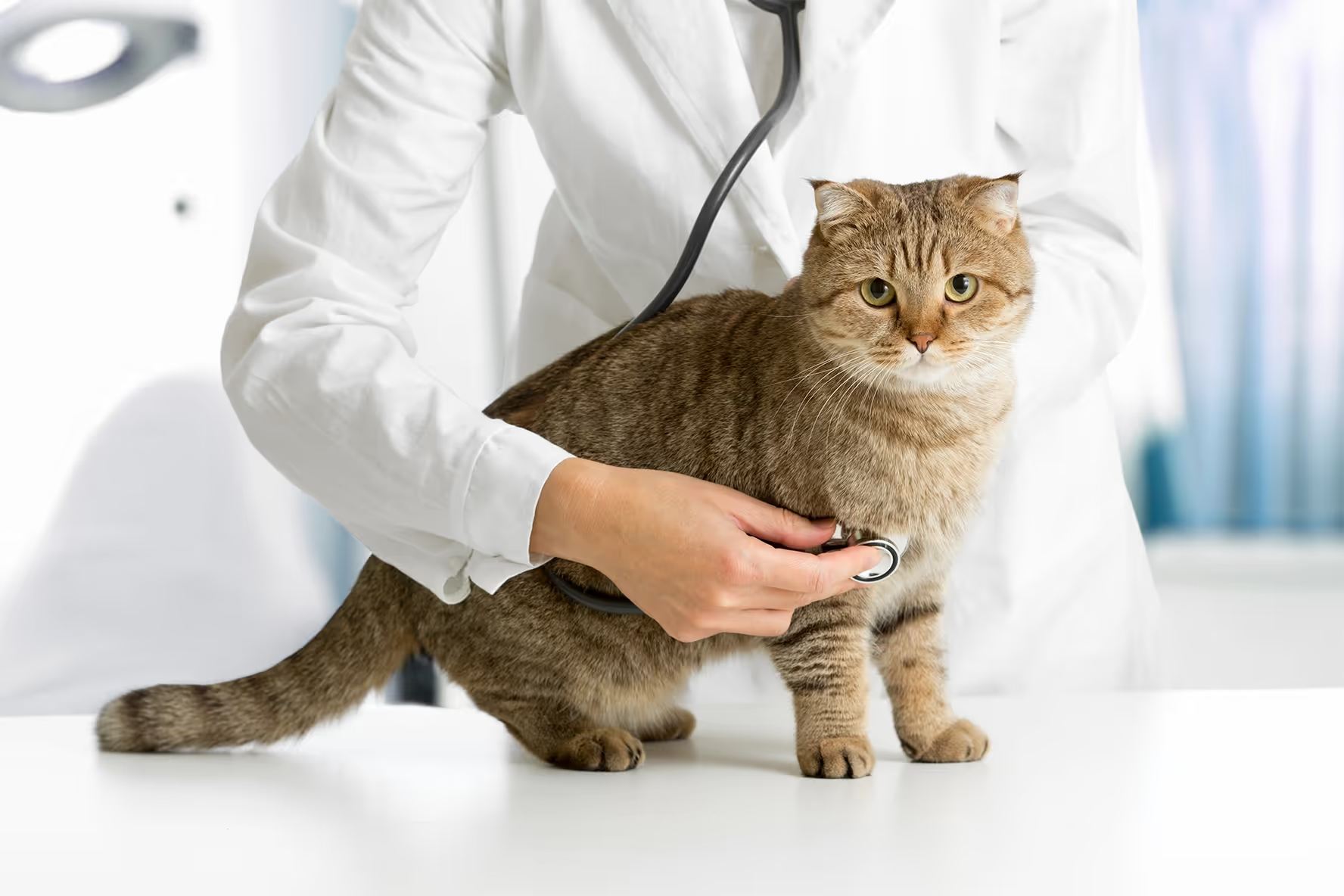
What is pet insurance? Basically, it’s health insurance that covers your pets. The most commonly covered pets are cats and dogs. While 67% of households in the US have pets, only one percent of those households have their pets insured. While there can be limitations to pet insurance, signing up for coverage before your pet reaches senior age can be beneficial in the long run. Even when your pet is young—around 1-3 years old—having insurance can be great in case of emergency medical situations.
How does pet insurance work?
Pet insurance acts similarly to human health insurance. You pay monthly for coverage, and when your pet needs to go to the vet your insurance covers some, if not all, of the cost of the visit.
Typically, to get started with a pet insurance provider they will have you take your pet to a vet for a checkup to verify any pre-existing conditions and the overall health of your pet. This allows the insurance provider to offer you accurate coverage pricing for monthly payments, as well as for deductibles and annual limits.
Once you have signed up for pet insurance, any covered trip to the vet you will pay upfront at the office and submit the receipt to your pet insurance provider for reimbursement. Depending on your plan this could be the full amount, a percentage, or the full amount minus your deductible. Either way, insurance will help you to save on your trips to the vet.2
Pros: What are the benefits of signing up for pet insurance?
Unlike human health insurance, pet insurance doesn’t have “networks” so you can choose to go to any vet you like and your insurance will cover your pet’s visits.
There are multiple different levels of coverage for pets, and as your pet ages you are able to increase coverage. Even with the base level of almost all pet insurances, your pet will be covered for any injuries and sudden illnesses. The lowest coverages can cover anywhere from 50-100% of the vet bills for an accident, injury, or sudden illness, and are often around $10 per month. This can save you a lot of money if your pet needs to have a thousand-dollar operation or have multiple tests done for an illness.3
By signing up for pet insurance you sign up for a regular cost to protect your pet. You have the opportunity to plan financially for your pet on a regular basis rather than have to dig into an emergency fund if or when a crisis occurs. Young and healthy dogs are relatively cheap to cover with pet insurance, and having coverage protects them from any unforeseen situations.4
Cons: Why would it not be worth signing up for pet insurance?
Just like with any insurance, there are certain limitations on what pet insurance policies will cover, and the rules are much steeper to cover pets in comparison with humans.
Limitations can be based on health, breed, or age and can impact either your dog’s ability to be covered or the cost of the coverage. Most pet insurance companies will not cover a dog with a pre-existing condition, which is why many require a checkup done within a few weeks before they begin covering your pet. There are also some pet insurances that will not cover a breed that is predisposed to certain health issues, for example not covering German Shepherds for their predisposition to hip dysplasia. And more often than not, insurance companies that start coverage on a dog that is 10-14 years old can be practically impossible to find, and when found, financially difficult.2
Many pet insurance plans also do not cover routine checkups and preventative care, such as spaying or neutering your pet, flea and tick medication, and other routine shots or bloodwork. While regular maintenance would be out of pocket for you for a majority of companies, anything out of the ordinary, like the need for more blood tests or an extra examination, would be covered.3
Unlike human health insurance, the payment process can be more difficult with pet insurance. All pet insurance companies work through a pay upfront and reimburse protocol. Any visit to the vet will be your responsibility to pay in advance and then submit your claim to the insurance company. Depending on your coverage sometimes it is difficult to tell how much you will be reimbursed and when you will receive that check or direct deposit. For complicated claims, it could be anywhere from weeks to months to receive that payment.4
Signing up for pet insurance can create a different financial struggle for you, instead of paying when a situation arises, you are paying on a monthly basis. For some, this is the best option as a recurring bill is easier to plan for than a surprise charge when your pet gets sick or hurt. However, if your pet has a safe and healthy life, financially you are spending more for the safety net that pet insurance provides. While in some cases pet insurance can provide an opportunity to save money, for healthy, safe dogs and cats it can be a drain on your financials. It is up to you to consider the safety net that pet insurance provides and decide if it would be a good fit for your situation.5
How to find the right pet insurance for you?
Finding pet insurance can be difficult because there are so many options out there. Rather than looking into individual companies, knowing what you are looking for out of your coverage is the best place to start.
When it comes to finding your ideal pet insurance coverage, it is important to focus on what you expect to get out of it.
- How much do you want to pay monthly?
- How much coverage does your dog need? Is their breed predisposed to any diseases or disorders?
- How much do you want your deductible to be?
- Do you want to avoid an annual maximum of available coverage?
- Is your dog accident prone: do they get hurt often, are they drawn towards dangerous situations like busy streets or reactive dogs?
- Do you want your plan to be able to grow with your dog?
Once you have answers to those questions you can narrow down your options much faster. Sometimes easier isn’t always best, so putting in the effort to make sure that you are getting the coverage you need is going to save you strife in the future.
A lot of companies have started including pet insurance as part of their work benefits, and if you are a lucky employee that has this as an option for your pets, be sure to keep in mind the above questions when reviewing its coverage. If it’s not the best option for you and your pet’s needs it may be worth it to skip.3
How does ImpriMed help?
ImpriMed supports pet parents navigating canine lymphoma by offering advanced lab testing that may be reimbursable through pet insurance. We test your dog’s live cancer cells in our state-of-the-art lab, and the results are analyzed using our AI model to generate a Personalized Prediction Profile.
This Profile helps your veterinarian make more informed treatment decisions by predicting how your dog’s cancer cells may respond to various therapies—potentially saving time, reducing unnecessary treatments, and optimizing care from the start.
Find out how to get your vet involved with ImpriMed today.
REFERENCES:
- https://www.lopriore.com/blog/is-pet-insurance-worth-buying-2021-pros-and-cons-of-pet-insurance/
- https://www.valuepenguin.com/pet-insurance/what-is-pet-insurance
- https://www.marketwatch.com/story/the-pros-and-cons-of-pet-insurance-2017-04-13
- https://iheartdogs.com/do-you-need-pet-insurance-5-pros-and-cons/
- https://www.sgu.edu/blog/veterinary/is-pet-insurance-worth-it/


